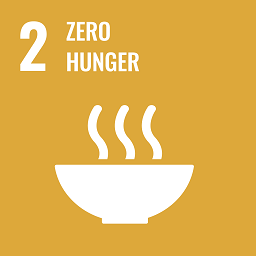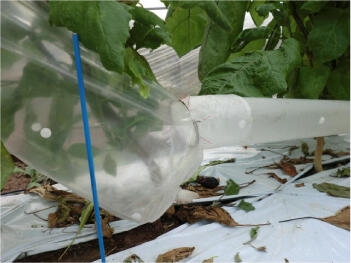

Greenhouse horticulture in Japan is on the decline due to the aging of producers and soaring prices of fuel required for heating. Under such circumstances, an increasing number of greenhouse horticulture growers in Kochi Prefecture have introduced devices that generate carbon dioxide (CO2), which promotes photosynthesis in plants. Like carbon dioxide gas application technology, environmental control technology aimed at increasing crop yields is likely to increase in the future.
In Kochi Prefecture, carbon dioxide generators are used in 60% of bell pepper greenhouses
| Kochi Prefecture is the top producer of eggplants and the third largest producer of bell peppers in Japan. The Tosa City and Aki City areas are especially known as production areas of eggplants and bell peppers. Approximately 60% of the bell pepper cultivation area and 30% of the eggplant cultivation area of greenhouses in Kochi Prefecture are equipped with carbon dioxide generators. |  Fig.1 Carbon dioxide generator (Provided by the Kochi Agricultural Research Center) |
| Try entering an eggplant greenhouse with a carbon dioxide gas generator. There is a green box with a large blower. This is a carbon dioxide generator (Fig.1). Combustion gas with a high concentration of carbon dioxide generated by burning kerosene is blown into the greenhouse through a round tunnel-like polyethylene film duct. |
Looking at the base of the eggplants, round polyethylene film duct with a hole about 2 mm in diameter appears to be crawling on the ground (Fig.2). Carbon dioxide is blown out of this hole.
Attention also paid to temperature control
Plants grow through photosynthesis using water, light, and carbon dioxide gas (carbon dioxide), but carbon dioxide tends to be insufficient in closed greenhouses. Therefore, the aim of carbon dioxide application technology is to artificially increase the concentration of carbon dioxide in greenhouses to increase the yield of eggplants and bell peppers.
Growers not only apply carbon dioxide, but also monitor temperature and humidity management, such as by performing ventilation early in the morning and gradually raising the temperature while maintaining the temperature in the afternoon while looking at temperature and humidity sensors. Thus, they perform cultivation while paying close attention to temperature and humidity management.
Yield of eggplants and bell peppers increased
According to the Kochi Agricultural Research Center, the environmental control technology that incorporates carbon dioxide gas application technology has led to the realization of 7 to 40% increase in the yield of seven main products: eggplants, bell peppers, shishito peppers, cucumbers, chives, tomatoes, and ginger (results of effect verification studies conducted from 2016 to 2018). At present, environmental control technology has spread to about 50% of the greenhouse area for the seven principal items.
It costs about 600,000 yen per unit to install a carbon dioxide gas generator for a 10a scale greenhouse, but it is reported that the take-home income of farmers increases even when the cost of installing a duct fan is taken into account. For example, in a model farmer of bell peppers, the yield per 10 acres increased by nearly 40% from about 8.5 tons to 12 tons during the winter (December to March), when the selling price is high, and profits increased by about 800,000 yen per 10 acres.

Fig.2 Polyethylene film duct passing near the base of the eggplants
(Provided by the Kochi Agricultural Research Center)
Background of the spread of carbon dioxide application technology
The background of the spread of carbon dioxide application technology in greenhouse horticulture in Kochi Prefecture is the achievement of the research on the "establishment of combination eco-environment control technology for small and medium-sized greenhouses" conducted from 2012 to 2014.
This research was led by Kiyoshi Miyauchi, an associate professor at Kochi University (Agricultural and Environmental Engineering), and others with the aim of verifying to what degree it is possible to increase the yield of bell peppers, etc. by controlling the environment inside a greenhouse by combining a greenhouse cooling and heating system that mainly utilizes solar heat (a cooling and heating device that combines a natural refrigerant heat pump water heater and a heat storage tank) with carbon dioxide application technology. The results of the study showed that it was possible to increase the yield of bell peppers by around 20%. Inspired by these results, the number of farmers who introduced carbon dioxide generators increased. Associate Professor Miyauchi noted that research on compound eco-environmental technology has promoted the spread of carbon dioxide application technology: "heat pump cooling and heating systems were expensive and slow to be introduced, but carbon dioxide generators proved to be more profitable than the installation cost, and are now essential items for greenhouse farmers."
In the future, it is expected that the environmental control technology that was successful in Kochi Prefecture will spread nationwide.
Project name
Science and technology research promotion program for agriculture, forestry, fisheries and food industry
Project period
FY 2012 to 2014
Title
Establishment of complex eco-environment control technology for small and medium-sized greenhouses
Leading research institutes
Kochi University, Kochi Agricultural Research Center, etc.
